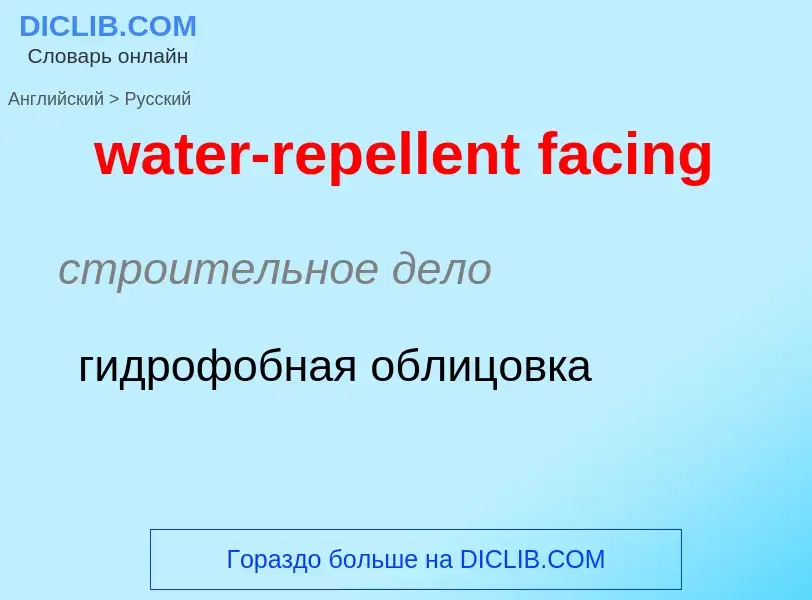Translation and analysis of words by ChatGPT artificial intelligence
On this page you can get a detailed analysis of a word or phrase, produced by the best artificial intelligence technology to date:
- how the word is used
- frequency of use
- it is used more often in oral or written speech
- word translation options
- usage examples (several phrases with translation)
- etymology
water-repellent facing - translation to russian
строительное дело
гидрофобная облицовка
Definition
Одежда, наряд (обычно женский).
2. м.
1) Приведение в порядок своего внешнего вида, надевание одежды.
2) Столик с зеркалом или зеркалами, за которым накладывают макияж, причесываются и т.п.
3) Помещение для отправления естественных надобностей человека; уборная.
Wikipedia

Durable water repellent, or DWR, is a coating added to fabrics at the factory to make them water-resistant (hydrophobic). Most factory-applied treatments are fluoropolymer based; these applications are quite thin and not always effective. Durable water repellents are commonly used in conjunction with waterproof breathable fabrics such as Gore-Tex to prevent the outer layer of fabric from becoming saturated with water. This saturation, called 'wetting out,' can reduce the garment's breathability (moisture transport through the breathable membrane) and let water through. As the DWR wears off over time, re-treatment is recommended when necessary. Many spray-on and wash-in products for treatment of non-waterproof garments and re-treatment of proofed garments losing their water-repellency are available.
Older methods for factory application of DWR treatments involve applying a solution of a chemical onto the surface of the fabric by spraying or dipping.
More recently the chemistry is applied in the vapor phase using chemical vapor deposition (CVD) machinery. The advantages of CVD include eliminating the use of hazardous and environmentally harmful solvents in the application process; requiring less chemical; and an extremely thin waterproof layer that has less effect on the natural look and feel of the fabric.
Some researchers have suggested that the use of PFASs in water-repellent clothing is over-engineering, and comparable performance can be achieved using specific silicon- and hydrocarbon-based finishes.


